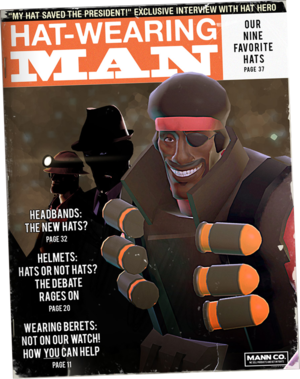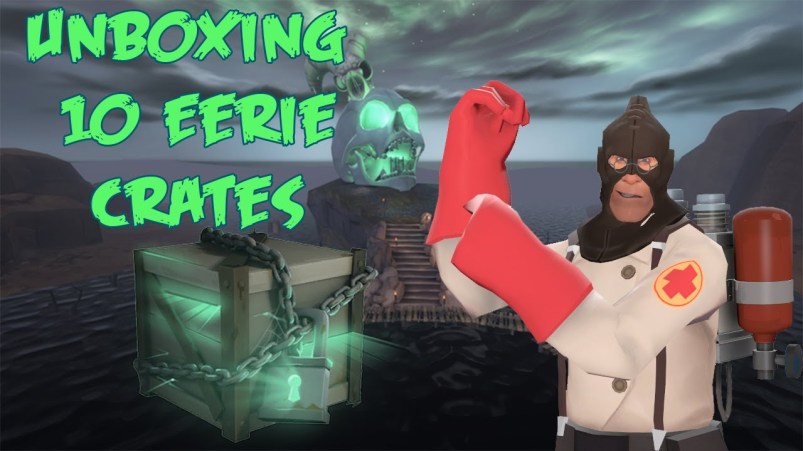The TF2 Economy: From Goldmine to Ghost Town I remember trading a single Bill's Hat for three keys back in 2011.

I remember trading a single Bill's Hat for three keys back in 2011. Back then, that felt like striking gold. Fast forward a few years, and you couldn't give a Bill's Hat away. Team Fortress 2’s TF2 economy, once a goldmine, became a cautionary tale about digital scarcity and market saturation. The rise and fall of its cosmetic economy offers valuable insights into the complexities of virtual markets and the impact of artificial scarcity on player behavior.
The Dawn of Hats and Cosmetics
Before Fortnite skins and Counter-Strike cases, there was Team Fortress 2. While TF2 wasn't the first game with cosmetic items, its implementation of a robust trading system and a tiered rarity system set a precedent for countless games that followed. The Mann-conomy Update in 2010 marked the beginning of this era, introducing a plethora of hats, accessories, and weapon skins to the game.
The initial excitement was palpable. Finally, players could express their individuality beyond selecting a class. More importantly, the introduction of a tiered rarity system (Common, Uncommon, Rare, Vintage, Unusual, etc.) created a sense of value and collectibility. Items were no longer just digital trinkets; they were status symbols. The rarer the item, the more bragging rights (and in-game currency) it commanded.
Early "grail" items included hats like the Ghastly Gibus (originally given to players who dominated a haunted Halloween map), the Team Captain, and Max's Severed Head. The perceived value of these items skyrocketed because they were seen as status symbols, things that other players valued highly.
The Rise of Unusuals and Trading Empires
If the initial introduction of cosmetics was a spark, then the introduction of Unusual hats was the explosion that ignited the TF2 trading scene. These hats, adorned with eye-catching particle effects like Burning Flames, Sunbeams, and Cloudy Moon, became the ultimate status symbol. Suddenly, trading wasn't just about acquiring a cool hat; it was about acquiring the coolest hat. This is how Unusual TF2 prices skyrocketed.
The mechanics of crate opening added another layer of excitement (and gambling) to the mix. Players purchased keys to unlock crates, hoping to unbox a rare Unusual. The thrill of seeing that slow item reveal, knowing it could be a valuable Unusual, was intoxicating. This led to the growth of massive trading communities and the establishment of "trading empires" built on hoarding these valuable items.

The principle of supply and demand was in full effect. As the demand for Unusuals soared, savvy traders began manipulating the market, creating artificial scarcity to drive up prices. Trading bots and automated price listing sites played a crucial role, allowing traders to track market trends and execute trades with lightning speed. The pursuit of wealth within the Team Fortress 2 universe became a full-time job for some. Trading became a real business.

The Great Crate Depression
The turning point came when Valve, in an attempt to boost revenue and keep players engaged, began introducing new crates and items at an accelerated rate. What was once a trickle became a flood. The value of many items plummeted, and the Team Fortress 2 economy began its descent into the Great Crate Depression. The biggest question being asked was "Why did the TF2 economy crash?"
It was the Gun Mettle Update in 2015. Suddenly, crates were dropping like rain, and the price of keys plummeted. The once-stable economy started to crumble. The TF2 market crash explained came from a place of oversaturation. Rare items became less rare. Less rare became mundane. The allure of unboxing that "god-tier" Unusual faded as the market became flooded with mediocre cosmetics. Widespread disillusionment set in among traders, and the trading scene began to decline.
The desperation reached such a point that "burn" events emerged, where players would destroy items for minimal rewards, just to try and remove some of the excess supply from the market. It was like watching a digital bonfire of virtual fortunes.

The Legacy
The boom-and-bust cycle of Team Fortress 2's virtual economy served as a crucial precedent for modern gaming trends. The lessons learned (or ignored) from TF2 can be seen in the ubiquitous loot boxes, battle passes, and seasonal events that dominate the gaming landscape today.
TF2 demonstrated both the potential and the pitfalls of unchecked supply and artificial scarcity. It showed how in-game economies could be a powerful tool for player engagement and revenue generation but also how easily they could be destabilized by poor design choices. The game's influence can be seen in the monetization strategies of countless other games, from Overwatch to Apex Legends.

Conclusion
Team Fortress 2's cosmetic value impacted PC gaming and the evolution of TF2's in-game items value, for better or worse. It proved that virtual economies could be just as complex and volatile as real-world ones. The tale of the TF2 economy shows that there's an history of TF2 trading that needs to be understood by today's players. Will developers learn from the lessons of Team Fortress 2, or are we destined to repeat the cycle of boom and bust in the pursuit of short-term profits? The gaming economy lesson TF2 teaches is one that every developer should know.
